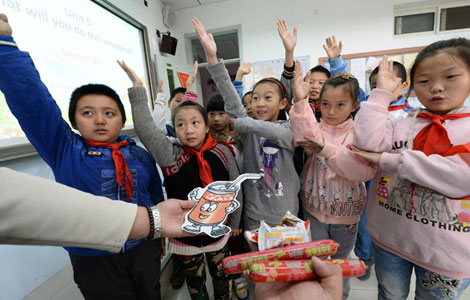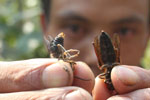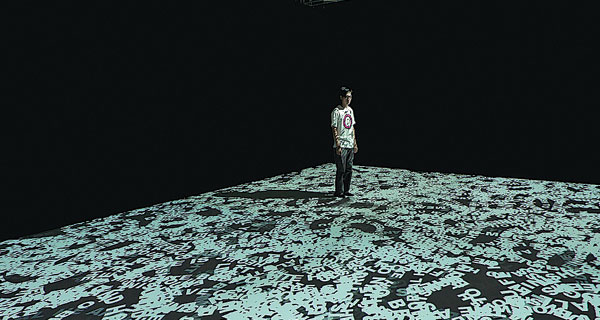Putting art and public in frame
Updated: 2013-10-25 07:27
By Xu Jingxi in Guangzhou (China Daily)
|
|||||||||||
An art museum preserves man's splendid cultural heritage, but the collection would be meaningless if the artworks were simply locked up in glass cases.
"An art museum is by nature an educational institution. Its mission is to help people of all ages to find the answers to what art is, how to appreciate art and how art is related to life," says Jason Sun, a curator from the Department of Asian Art of the New York-based Metropolitan Museum of Art.
Today's art museums, especially those specialized in contemporary art, have to do more than put on exhibitions, they need to come up with more creative ideas, according to Ivy Lin, a curator at Hong Kong Art Promotion Office.
"The spirit of contemporary art is to challenge stereotypes," Lin says. "Art museums' public education has been restricted by several fixed patterns. It's like a restaurant offering set meals only. They can taste good, but customers will feel bored."
|
Contemporary art museum M+ has organized education programs to help the public know more about art. Provided by M+, West Kowloon Cultural District |
M+, a contemporary art museum that will open to the public in Hong Kong in 2017, has promised to be an "approachable" museum.
"We value public education programs a lot. The more people see, the more they know about art. We will organize trips to take the audience to the workroom to watch staff members repairing, framing and displaying art works," says Pi Li, a senior curator at M+.
Lin from the Hong Kong Art Promotion Office elaborates on fostering the connection between art and people. "We had seen the restrictions of museums to go further in terms of connecting contemporary art with the public so we started the Oi! Project," Lin, curator of Oi!, says.
The 108-year-old red-brick buildings standing at No 12 Oil Street in Hong Kong were given a new life to become a special art area with the punchy name "Oi!" in May.
It doesn't have spacious fancy showrooms but the outdoor grassland can be a playground for artists to experiment with their ideas.
Nor does it display many priceless art works. But pleasant surprises catch visitors' eyes in every corner and make them smile: colorful pinwheels made of abandoned paper and cloth tied on the iron gate, more than 100 plastic water bottles holding thriving plants covering a barbed wire fence, and lovely "shrimps" and "crabs" made of dried seaweeds on the wall.
These artworks were the fruits of the cooperation between artists and residents in communities nearby.
They fit in with the environment well and were inspired by local people's lives.
"The characteristic of contemporary art is that it is born at the moment and keeps changing. So it shouldn't be confined in a certain form such as a statue standing in a museum. It can be blended into the scenery in other environments," says Lin.
"In the age of information, the communication between art and the public should go beyond the traditional way in a museum. We encourage our curators, artists and the audience to discuss on our online platform."
What's most special about the Oil! Project is that it focuses on community art programs. For instance, a program was organized in which 12 groups of people including iPhone users, architecture students, South Asian families and deaf children were paired with 12 photographic artists to explore their living environments and capture the touching moments with photos.
"We're planting a seed of art in people. We hope they can learn to appreciate life through an artistic perspective after participating in community art programs," Lin says.
xujingxi@chinadaily.com.cn
(China Daily 10/25/2013 page18)
Today's Top News
Vice-premier calls for strengthened EU ties
EU asked to ease visa restrictions
Beijing discusses ban on idling motor vehicles
PMI heads for 7-month high
Ban to help protect kids from sexual predators
Court upholds verdict of Bo Xilai
Returnees are 'seed capital' for startups
Samsung's response fails to satisfy users
Hot Topics
Lunar probe , China growth forecasts, Emission rules get tougher, China seen through 'colored lens', International board,
Editor's Picks

|

|

|

|

|

|






